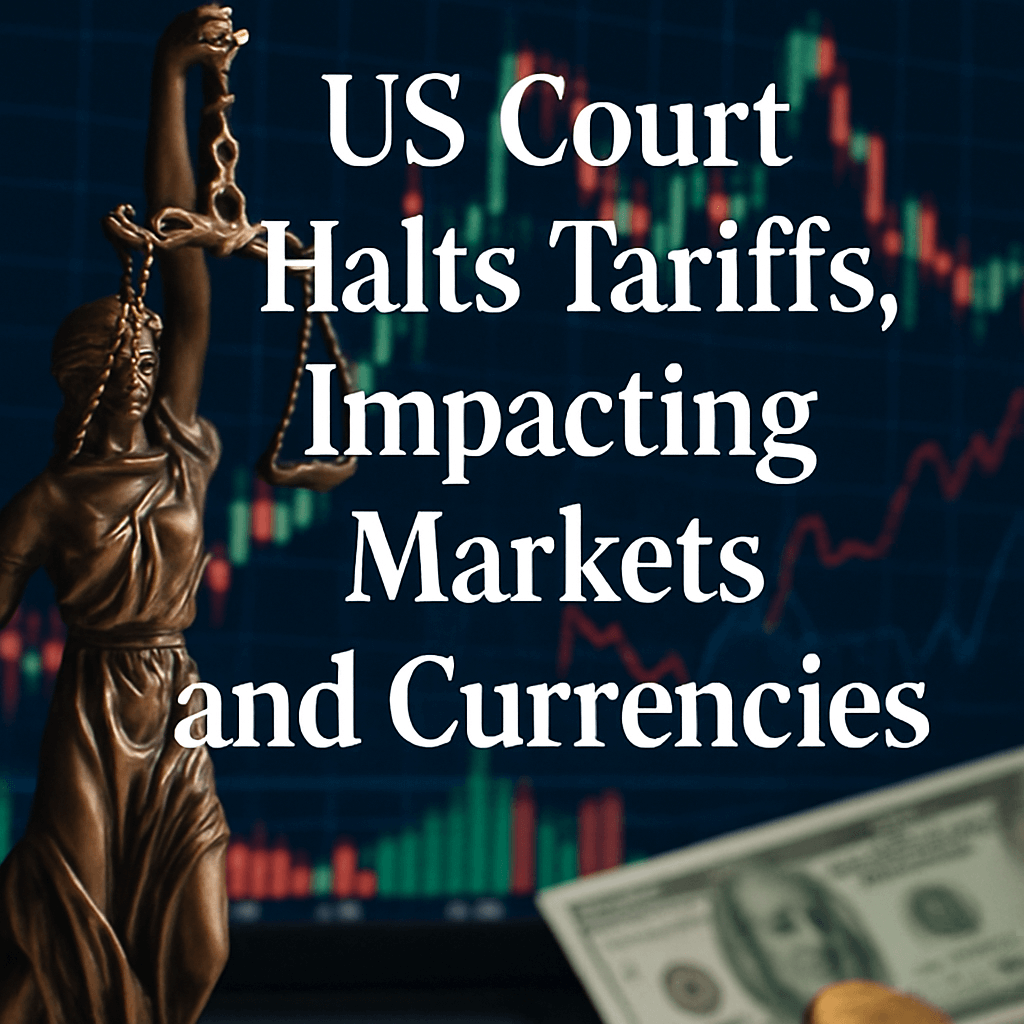US Court Halts Tariffs, Impacting Markets and Currencies

The US Court of Appeals for the Federal Circuit on Wednesday issued a stay of a lower-court decision that had invalidated most of the Trump administration’s broad tariffs on key trading partners. The ruling has injected fresh uncertainty into markets, triggering renewed selloffs in US equities and a sharp slide in the US dollar from its intraday peaks on Thursday.
Background: Tariff Dispute and Legal Authorities
In April, the Trump White House enacted “reciprocal tariffs” citing the International Emergency Economic Powers Act (IEEPA), imposing levies of up to 25% on imports from the EU, Canada, Mexico, Japan and others. The Court of International Trade in New York ruled these measures exceeded presidential authority under IEEPA, prompting a pause on major trading-block duties.
“The president does not possess unilateral power under IEEPA to impose tariffs this sweeping,” wrote Judge Jennifer Sung in the April decision.
The federal appeals court stay now grants the administration additional time to appeal to the Supreme Court while preserving the tariffs’ legal effect. Federal Trade Representative (USTR) spokesperson Maria Lopez confirmed that alternative authorities—such as Section 232 (national security) or Section 301 (unfair trade practices) of the Trade Act—remain on the table, albeit requiring notice-and-comment and likely a 60–120-day implementation window.
Market Reaction: Equities, FX, and Bond Yields
Equity Indices Slide Back
- US stock futures fell in Asia: Dow futures down 0.08%, S&P 500 and Nasdaq 100 both off 0.26% as of 4 am CEST Friday.
- Thursday’s late rally—driven by strong Nvidia earnings—gave way to profit-taking, sending the S&P 500 about 0.5% lower from intraday highs.
- Volatility index (VIX) spiked above 16.5, up from 14.8 prior to the court decision.
Currency and Fixed Income Movements
- US 10-year Treasury yield surged to 4.50% post-ruling before easing to 4.42% as bond prices climbed on haven demand.
- EUR/USD rebounded from an intraday low of 1.1210 to 1.1353 by Friday morning, a 1.25% gain.
- Gold futures rallied to $1,931 per ounce, up nearly 1.5% from Thursday’s trough, as investors sought safe havens.
- Safe-haven currencies like the Swiss franc and Japanese yen strengthened roughly 0.8%–1.2% against the dollar.
Deep Dive: Technical Analysis of FX and Rates
Chart patterns in EUR/USD have flipped bullish, with a break above the 50-day moving average at 1.1310 supporting further upside to the 1.1400 resistance. According to FX strategist James Kim at CapitalEdge Analytics, “If the appeals court hold persists, we anticipate extended dollar weakness, with a possible test of 1.1500 by early June.”
In the Treasury market, the 2-year/10-year yield curve remains inverted by 25 basis points—a technical precursor historically associated with recessionary concerns. “A sustained inversion coupled with policy uncertainty over trade could amplify risk aversion,” notes fixed-income veteran Sarah Patel at GlobalBond Insights.
Analysis: Commodities and Corporate Impact
Tariffs on industrial inputs could raise costs for sectors from auto manufacturing to electronics. Morgan Stanley’s commodities research team estimates a 5% levy on semiconductors would inflate component costs by $3–4 billion annually. Energy prices have so far been insulated, but any retaliatory measures by foreign governments could disrupt crude flows, potentially adding volatility to Brent and WTI benchmarks.
Policy Implications and Future Outlook
The administration’s signaling to pivot toward Section 232 steel and aluminum authorities may replicate existing 10–25% levies, currently under WTO scrutiny. Meanwhile, US–EU trade talks on digital services and carbon border adjustments continue in Brussels next week, with little clarity on how the tariff saga will affect negotiations.
“The reciprocal tariff plan remains a key pillar in our trade agenda,” said Peter Navarro, White House trade adviser. “We’re prepared to deploy every legal tool to protect American jobs and national security.”
Expert Perspective
- Legal Expert View: Trade attorney Laura Jenkins of Hogan Lovells highlights the novelty of IEEPA application to trade policy and sees a “likely Supreme Court showdown” on executive authority.
- Economist Outlook: Harvard’s Dr. Michael Trent anticipates a modest 0.1–0.2 percentage-point drag on US GDP growth in H2 if tariffs remain in place, mainly via higher input costs and reduced export demand.
- Investor Take: Pension fund CIOs are trimming cyclicals in favor of defensives and quality dividend plays, citing the dual storm of policy risk and stretched equity valuations.
Conclusion
The appeals court stay preserves the Trump-era tariffs in the near term, fueling volatility across equities, currencies and bonds. With multiple legal avenues open, the administration appears resolved to maintain or reintroduce levies, complicating the global trade outlook. Investors will be closely monitoring Supreme Court filings, US-EU talks, and Fed commentary for clues on the policy trajectory.